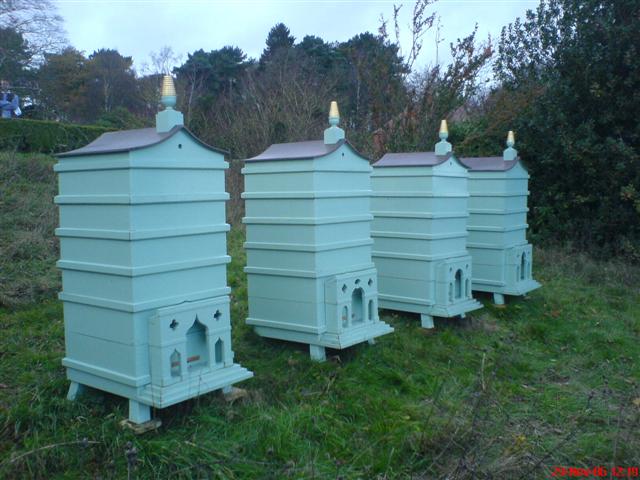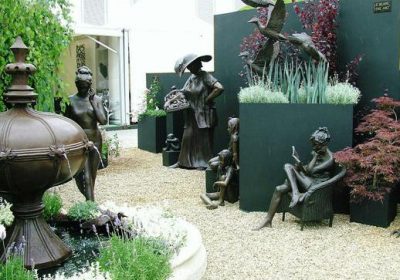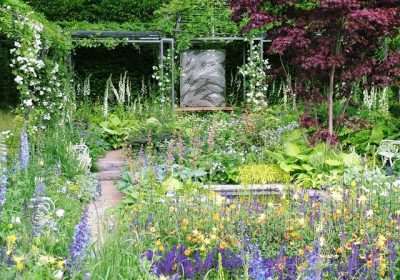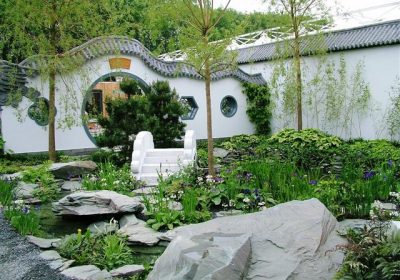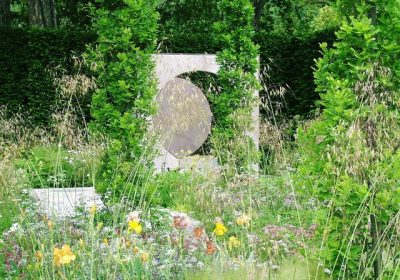Bees cause a buzz at this years Chelsea Flower Show
Description
The RHS Chelsea Flower Show, sponsored by Marshalls plc, is always a hive of activity and this year is no exception as a number of the exhibits feature planting that is attractive to bees. Studies show that bumblebees, which rely on certain plants for their survival, are declining in the UK due to habitat alterations, climate change and industrial farming. Three species of the insect have become extinct in Britain, while another nine are endangered. Chelsea will inspire gardeners with planting ideas to ensure that their garden is a real honey pot for all kinds of bees. The RHS Chelsea Flower Show takes place on 22-26 May 2007 (22 & 23 May: RHS members only. 22 & 23 May all day tickets now sold out). Tickets must be booked in advance on 0870 247 1226 or at www.rhs.org.uk/flowershows
The honey bee theme can be found in The Fortnum & Mason Garden which incorporates four Fortnum beehives as ornamental features and functional items. The garden has rich, sumptuous planting, which is predominately red, purple, pink and pale yellow, creating a tapestry of rich colours and texture that is attractive to bees. Herbaceous plants and low shrubs create undulating waves and are planted in drifts, as preferred by bees. After Chelsea the beehives will be re-located to the roof of the Piccadilly store for honey production.
The British Beekeepers’ Association Urban Beekeeping exhibit in the Great Pavilion, will demonstrate to visitors how they can safely keep their own honey bees in an urban environment. The exhibit shows how bees can thrive in an urban environment as they have the advantage of a massive range of trees and garden plants on their doorstep, far wider than would be found in today’s monoculture countryside. Bees can find nectar everywhere in the city; from street trees to railway embankments.
The Laurent-Perrier Garden includes planting that is attractive to bees. The garden’s designer, Jinny Blom, says; “Umbellifers are an important nectar source for many insects and astrantia is very much favoured by bees; it’s rare to see a flower without a bee on it! The astrantias and other plants in the Laurent-Perrier Garden will create the right flower mix which will subtly attract bees.”
The Children’s Society Chic Garden takes inspiration from the song Lust for Life by Iggy Pop and is an optimistic and invigorating space. Planting in the garden includes eryngiums (to encourage birds), and salvias (to encourage bees).
As bees like warm, sunny weather the warmer climate that currently prevails is to their liking. However warm winters, especially in the South, can cause young bumblebee queens to fail to go into normal hibernation in autumn, or to wake up prematurely and try to start establishing their colonies in winter. These nests often cannot survive during prolonged cold spells and hard frosts. Gardeners can help bees that do start emerging earlier in late winter/early spring by providing the right flowers – good plants to try include crocus, grape hyacinth (Muscari) and winter aconite (Eranthis hyemalis), as well as Pulmonaria, Clematis cirrhosa, Erica carnea and spring-flowering mahonias.
The RHS Chelsea Flower Show hosts a wealth of gardening ideas, with fabulous show gardens, inspirational small gardens and vibrant displays from over 100 of the world’s best nurseries and specialist growers. Those wishing to learn and discover some of the wonders of horticulture must see the Lifelong Learning exhibits within the Great Pavilion. Added to that, displays of desirable gardening products, floral design, floristry and expert gardening advice, this year’s RHS Chelsea Flower Show really will be the bee’s knees.

